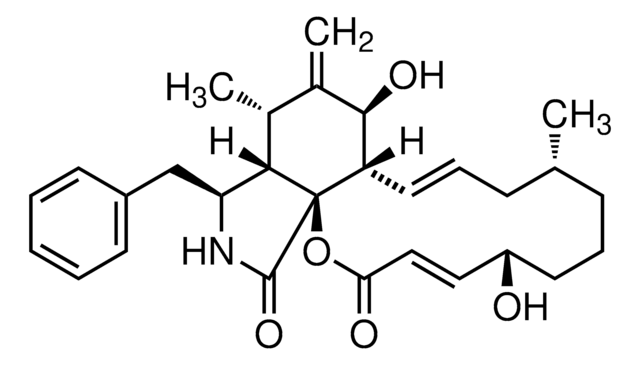J2500
(±)-Jasmonic acid
suitable for plant cell culture, BioReagent, liquid
Synonym(s):
(±)-1α,2β-3-Oxo-2-(cis-2-pentenyl)cyclopentaneacetic acid
Select a Size
Select a Size
About This Item
Recommended Products
product line
BioReagent
Quality Level
assay
≥97% (TLC)
form
liquid
technique(s)
cell culture | plant: suitable
application(s)
agriculture
storage temp.
2-8°C
SMILES string
CC\C=C/C[C@H]1[C@@H](CCC1=O)CC(O)=O
InChI
1S/C12H18O3/c1-2-3-4-5-10-9(8-12(14)15)6-7-11(10)13/h3-4,9-10H,2,5-8H2,1H3,(H,14,15)/b4-3-/t9-,10-/m0/s1
InChI key
ZNJFBWYDHIGLCU-CMIOBCHKSA-N
Looking for similar products? Visit Product Comparison Guide
Application
Preparation Note
Other Notes
related product
Storage Class
11 - Combustible Solids
wgk_germany
WGK 3
flash_point_f
Not applicable
flash_point_c
Not applicable
ppe
Eyeshields, Gloves, type N95 (US)
Choose from one of the most recent versions:
Certificates of Analysis (COA)
Don't see the Right Version?
If you require a particular version, you can look up a specific certificate by the Lot or Batch number.
Already Own This Product?
Find documentation for the products that you have recently purchased in the Document Library.
Customers Also Viewed
Protocols
Reference guide and preparation guide for antibiotic and antimycotic use in plant tissue culture.
Our team of scientists has experience in all areas of research including Life Science, Material Science, Chemical Synthesis, Chromatography, Analytical and many others.
Contact Technical Service










